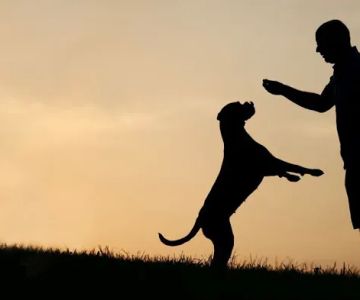Exploring the A&M MSL Historical Veterinary Collection: A Treasure Trove of Veterinary History
- About the A&M MSL Historical Veterinary Collection
- The Significance of Veterinary History in Modern Practice
- Highlights of the A&M MSL Historical Veterinary Collection
- How to Access the A&M MSL Historical Veterinary Collection
- Why Understanding Veterinary History is Essential
1. About the A&M MSL Historical Veterinary Collection
When I first heard about the A&M MSL Historical Veterinary Collection, I was intrigued by the idea of a comprehensive collection dedicated to the history of veterinary medicine. Located at Texas A&M University, the collection is housed in the Medical Sciences Library (MSL), and it offers a fascinating glimpse into the evolution of veterinary practices over the years. As someone deeply passionate about both animals and veterinary care, this collection struck me as an invaluable resource, both for students and for those in the veterinary profession.
The A&M MSL Historical Veterinary Collection is unique in its scope, containing rare books, manuscripts, medical texts, and equipment from as far back as the 17th century. As I delved deeper into the materials, I was astonished by the depth and breadth of information available. It’s clear that this collection plays a crucial role in preserving the history of veterinary science, making it accessible for future generations of veterinarians, researchers, and animal lovers alike.
2. The Significance of Veterinary History in Modern Practice
Understanding the history of veterinary medicine is more than just a nod to the past—it is essential for improving modern veterinary practices. I found that exploring the A&M MSL Historical Veterinary Collection offers valuable insights into how far veterinary care has come and how it continues to evolve. By examining the methods, tools, and knowledge used by past veterinarians, we gain a deeper appreciation for the modern techniques and technologies we now have at our disposal.
One of the most interesting aspects I learned while exploring the collection was how early veterinarians dealt with the challenges of animal care. They didn’t have the sophisticated diagnostic tools and medical imaging we now take for granted, but their resourcefulness, combined with a deep understanding of animal biology, led to remarkable breakthroughs. This connection to the past made me realize how important it is to honor the legacy of veterinary pioneers while embracing the advances that allow us to provide even better care for animals today.
3. Highlights of the A&M MSL Historical Veterinary Collection
The A&M MSL Historical Veterinary Collection is a true treasure trove for anyone interested in veterinary history. Some of the highlights of the collection include early veterinary textbooks, hand-drawn illustrations of animal anatomy, and antique veterinary instruments. As I walked through the exhibits, I found myself captivated by the unique artifacts that showcased the evolution of veterinary science. These items, each with its own story, not only highlight the scientific advancements made but also the cultural attitudes toward animals at different points in history.
One of my favorite items was a rare manuscript detailing early veterinary surgeries. The precision and care with which these surgeries were conducted were astonishing, especially considering the limited tools available at the time. It’s easy to take for granted the modern surgical methods we now use, but seeing these early attempts made me appreciate how much has been achieved in veterinary science over the centuries.
4. How to Access the A&M MSL Historical Veterinary Collection
If you’re interested in exploring the A&M MSL Historical Veterinary Collection for yourself, there are several ways to access it. As a part of Texas A&M University, the collection is available to both students and the public. You can schedule a visit to the Medical Sciences Library, where the collection is housed, and request access to specific items or areas of interest. Many of the materials are available for research purposes, and there are knowledgeable staff members on hand to guide visitors through the collection.
For those who can’t visit in person, the collection also offers online access to many of its digitized materials. I was thrilled to discover that many of the rare books and manuscripts have been scanned and made available for virtual viewing, making it easy for anyone interested in veterinary history to explore these remarkable resources from anywhere in the world. Whether you’re a veterinary student, a professional in the field, or simply an enthusiast, the collection is a rich resource for learning and discovery.
5. Why Understanding Veterinary History is Essential
Understanding the history of veterinary medicine is more than just an academic pursuit—it’s an essential part of becoming a better veterinarian. As I reflected on my own veterinary education, I realized how much I’ve benefited from learning about the great pioneers who laid the groundwork for modern veterinary practices. These historical insights help shape our understanding of animal health, providing context for the innovations that continue to push the field forward.
Furthermore, by studying veterinary history, we can learn from past mistakes and successes. The A&M MSL Historical Veterinary Collection serves as a reminder of the importance of continuous learning and adapting. It also encourages us to reflect on how far the field has come and how we can contribute to its future. Whether you’re interested in the historical evolution of veterinary surgery, the development of animal vaccines, or early approaches to animal welfare, there’s so much to learn from the past that can improve our practice today.
For those interested in delving deeper into the history of veterinary science, I encourage you to explore the A&M MSL Historical Veterinary Collection. It’s not only a fascinating glimpse into the past but also a valuable resource that can inspire the future of veterinary care.











